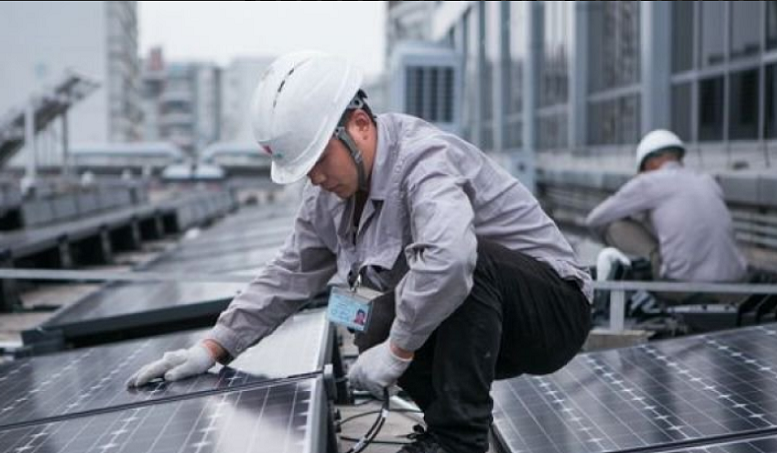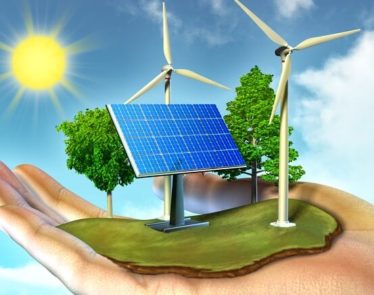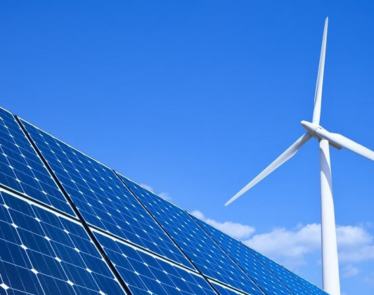
Chicago, IL – December 14, 2017 – Today, Zacks Equity Research discusses the Semiconductors, including Yingli Green Energy Holding Co. Ltd.’s (NYSE:YGE) and ReneSola, Ltd. (NYSE:SOL).
President Trump’s plans to shift focus to traditional energy businesses such as coal, oil and gas and his skepticism around global climate change have cast a shadow over the future of solar companies. As part of this policy stance, the President signed an executive order to repeal the Clean Power Plan in March of this year. This was followed by the administration’s unilateral exit from the Paris climate agreement.
The industry held up reasonably well thus far, but the operating environment has undoubtedly become far less supportive and helpful, which is essential for a relatively young industry. While the long-term potential of the space is undeniable, the industry is faced with a number of near-term challenges that will likely keep these stocks under pressure. We discuss some of these below.
The Trump Effect: The present U.S. administration doesn’t have a friendly stance toward alternative energy sources. In June, President Trump announced his decision to withdraw from the Paris climate agreement. Trump’s walkout decision in his controversial speech clearly reflected his belief that climate change is a ‘Chinese hoax.’
Many fear that whatever progress the United States has made last year toward pollution mitigation and renewable assets expansion in accord with the Paris agreement will now be in vain. Under the accord, the United States, along with other 159 nations, had pledged to cut its greenhouse gas emissions 26 – 28% below 2005 levels by 2025. In fact, the agreement was signed largely on account of a preliminary understanding between the United States and China – the two largest carbon-emitting nations.
In March, Trump signed an executive order to roll back the Clean Power Plan – Obama’s signature climate policy to curb carbon emissions to 32% below 2005 levels by 2030 at coal-fired power plants. The Clean Power Plan had mandated emission reduction goals for the states in order to ensure that the Environmental Protection Agency’s overall target was achieved.
The annulment of the Clean Power Plan will lift the ban on coal leasing on federal lands, scrap regulations to curb methane emissions from oil and gas production, and lead to a reconsideration of “social cost” of carbon emissions in all regulatory actions. The move will definitely hurt the clean energy space.
We will see how the policy landscape evolves, but the focus will likely be on incentivizing the coal and natural gas industries. Since 2014, as utilities closed a large number of aging coal-fired generators, wind and solar have been the two biggest sources of electricity in the United States. The aforementioned policy changes will likely reverse this trend in the coming years.
China Factor: China’s solar industry is not immune to the ongoing slowdown in its economy. According to the Organization for Economic Co-operation and Development (OECD), China’s economic growth is likely to slow down to 6.5% this year and a further decline to 6.3% in 2018. Gross domestic product, or GDP, of the world’s second-largest economy, grew 6.7% in 2016 — the weakest in the last 26 years. Considering these numbers, it is clear that the decelerating trend is likely to continue in the near term.
The country’s economic situation has sparked apprehensions that the government could shift asset resources away from investments in renewable energy in order to fuel its stock market. One of the most prominent effects of the economic slowdown in China has been relatively weak demand for electricity.
At the end of 2015, China had set a target of installing 150 GW of solar energy by 2020. But in 2016, the figure was cut by 20% to 110 GW. Though the Asia Europe Clean Energy Advisory (AECEA) raised optimism by stating that the figure could exceed the revised target, uncertainties continue to persist.
In fact, despite being the world’s largest solar market, China is expected to see a decline in solar installations to 17.5 GW in 2017, well below its expected number of more than 30 GW.
Again, China’s solar industry faces challenges ranging from potential tariffs abroad to insufficient grid connections at home. The United States has been competing with China and India to become a market leader in an industry where production costs have plummeted, favoring producers of scale. In China, solar generation has been hindered by wastage or curtailment.
These factors might have led Yingli Green Energy Holding Co. Ltd.’s shares to plummet about 44.9% over the last year. Again, shares of ReneSola, Ltd. tumbled 7.9% over the same period.
Fed Rate Hike: The U.S. central bank has been steadily raising interest rates, with the third rate hike of 2017 coming out of the central bank’s latest meeting on December 13th. While long-term interest rates still remain low by historical standards, a material rise in long-term interest rates remains a key risk for this capital-intensive industry that relies heavily on capital markets for access to funds.
While companies in this space have been benefiting from a low-interest rate environment so far, rate hike makes this industry far less appealing. This is because the resulting increase in cost of capital will increase cost of operations for the alternate energy companies, thereby reducing their profitability.
Subsidy Rollback: While the U.S. government provides the Investment Tax Credit and Production Tax Credit to support growth of alternate energy, several other large nations are planning to lower subsidies provided to renewable energy operators.
Per recent media reports, China’s National Development and Reform Commission has hinted at a cut in Feed-in Tariffs (FiT) from the present rates. Though the changes in tariffs are yet to be made official, the aim is to reduce FiTs by roughly 3-4% per year so that onshore wind might reach grid parity by 2020.
In February 2016, Japan’s Ministry of Economy, Trade, and Industry (METI) proposed an 11% cut in solar FiT. Recently, Japan announced plans to cut FiT rates annually to reach the level of household electricity rates of 20.5 cents per kilowatt-hour (“KWh”) by 2019. The FiTs in 2017 will be 23.9 cents per KWh, then reduced to 22.2 cents per KWh in 2018 and finally will reach the target set for 2019.
Similarly, in August 2015, the UK government had hinted at an 87% reduction in support for domestic solar and an up to 82% cut in FiTs for commercial rooftops. Again, Germany is expected to cap subsidy payments after the generation capacity reaches a certain target.
Rolling back subsidies will lead to an increase in the cost of energy produced by renewable sources. This will hurt the prospects of renewable energy across the globe.
Anti-Dumping Duties: The move from the U.S. Department of Commerce (“DOC”) to impose import duties on solar panels and other related products from China and Taiwan could escalate the U.S.-China trade conflict.
The decision addresses one of the main charges in a petition brought by SolarWorld Industries America, a German solar manufacturer with major operations in the United States. A complaint lodged by SolarWorld brought to the fore a loophole that the Chinese solar product makers were exploiting to evade duties imposed by the Department of Justice in 2012.
The higher tariffs came at a time when the solar industry was, on the whole, recovering after a two-year supply glut.
The Commerce Department in December 2014 set anti-dumping duties at about 52% on most module imports from China and at 19.5% on most imports of Taiwanese cells. It has also slapped 39% anti-subsidy tariffs on most China-made panels.
New Emerging Technologies: The alternative energy industry remains an emerging sector with a steady focus on the lowest-cost technology. This may prove disastrous for existing companies riding the solar boom should a cheaper alternative emerge. The industry also has to deal with cost-competitiveness from traditional means of electricity generation.
Limitation of Quantity: Renewable energy technologies totally depend on the weather to generate energy.
Hydro generators require rains to fill dams to supply flowing water. Wind turbines need strong winds to move the blades, and solar generators require clear skies and sunlight to gather heat and generate electricity. When these resources are absent, in the event of weather fluctuations, it hampers the amount of electricity generated. This problem can be solved with energy storage, which leads to additional costs.
It is difficult to generate large volumes of electricity from renewable sources compared with traditional fossil fuel generators. Solely depending on renewables would either require a reduction in consumption or ramping up of energy facilities. In order to tackle current energy problems, it is necessary to strike a balance between different power sources.
High Costs: The current cost of renewable energy technology is also far more than traditional fossil fuel generation cost. This is because it is a new technology and hence has very large capital cost.
Setting up renewable energy generation facilities requires a huge financial outlay. Installation of wind turbines, solar panels and hydroelectricity plants are relatively expensive. The construction of these plants requires upfront investments and careful planning and implementation. Also, maintenance expenses are high. Also, the electricity generated needs to be delivered to towns and cities, which means an additional cost of installing power lines.
Conclusion
Globally, China leads the world in total electricity generation from renewable sources, helped by its increased allegiance in recent times to the alternative path. It is followed closely by the United States, India, Brazil, and Canada.
All leading solar cell manufacturers are looking for opportunities in the emerging markets. These markets primarily comprise the Asia-Pacific region with China, India and Japan being the key destination for the global solar giants. The long-term outlook, on the whole, looks bright. This is especially true as global warming and high fuel emission issues have proven how indispensable clean energy sources will be for the future.
However, the global economic turmoil, China’s economic slowdown and the consequent subsidy rollback in the prime global solar markets are major headwinds for the renewable energy industry on the whole. Also, Trump’s focus on reviving the coal industry instead of encouraging alternate energy is a serious concern for all renewable energy companies.
Again, if we are to expand renewable manufacturing infrastructure worldwide to fight the climate crisis, the United States, as well as Chinese manufacturers, should try to settle their dispute before the industry at large is damaged. Measures to reduce the inflow of Chinese solar panels may hamper the battle against climate change.











